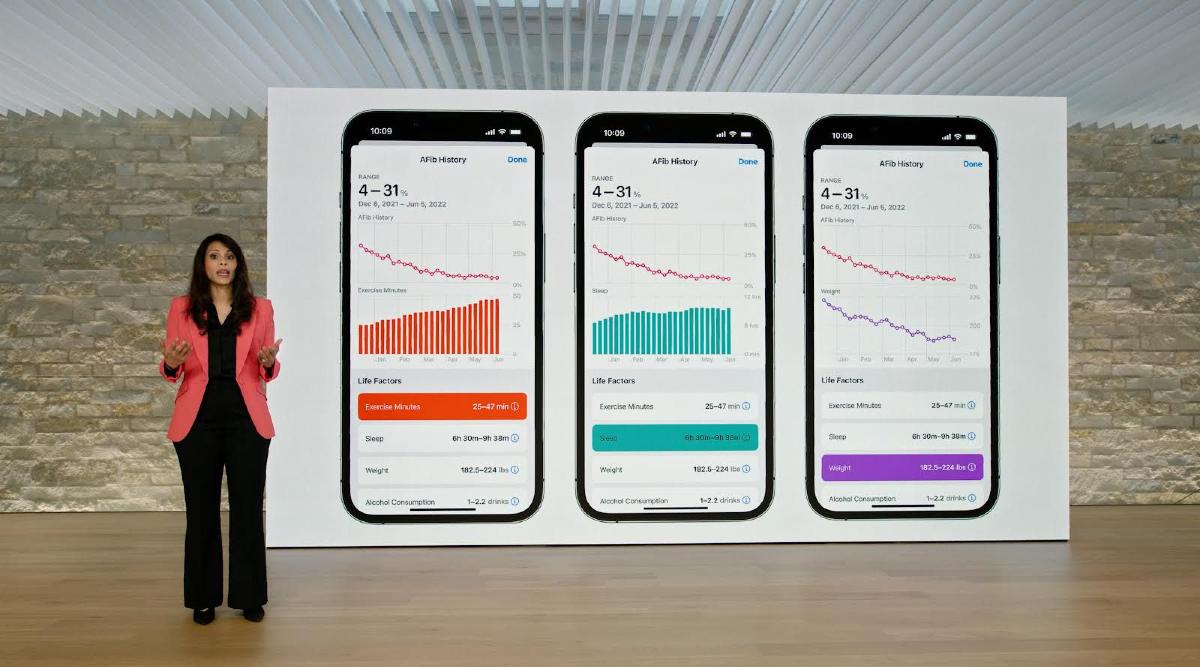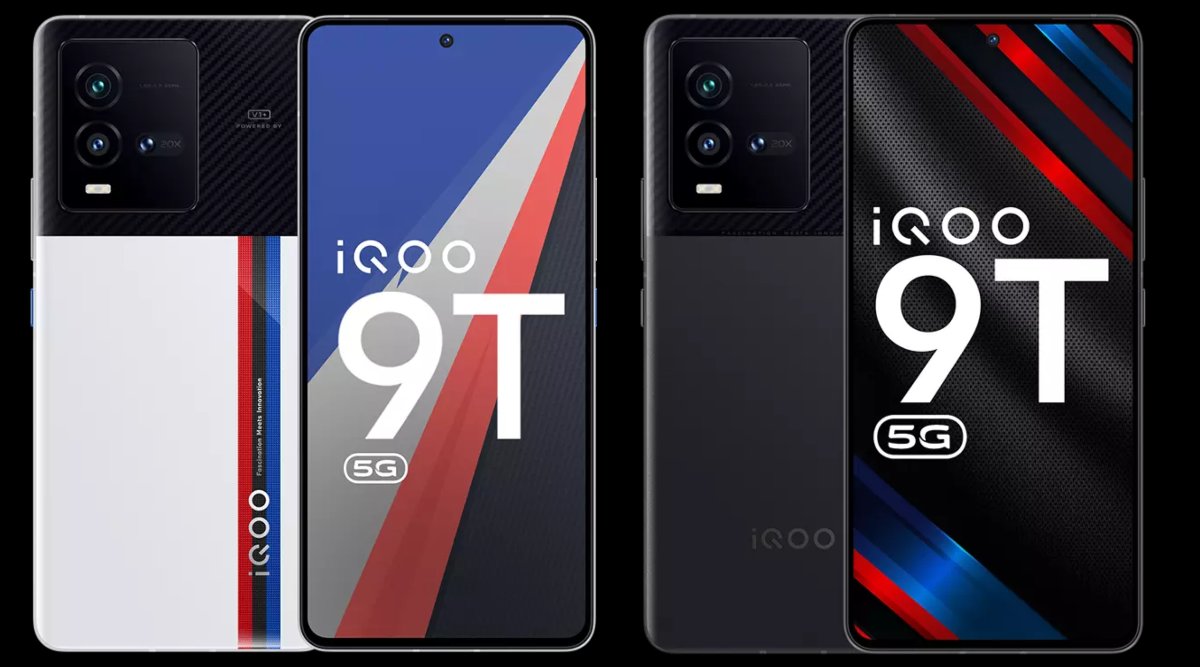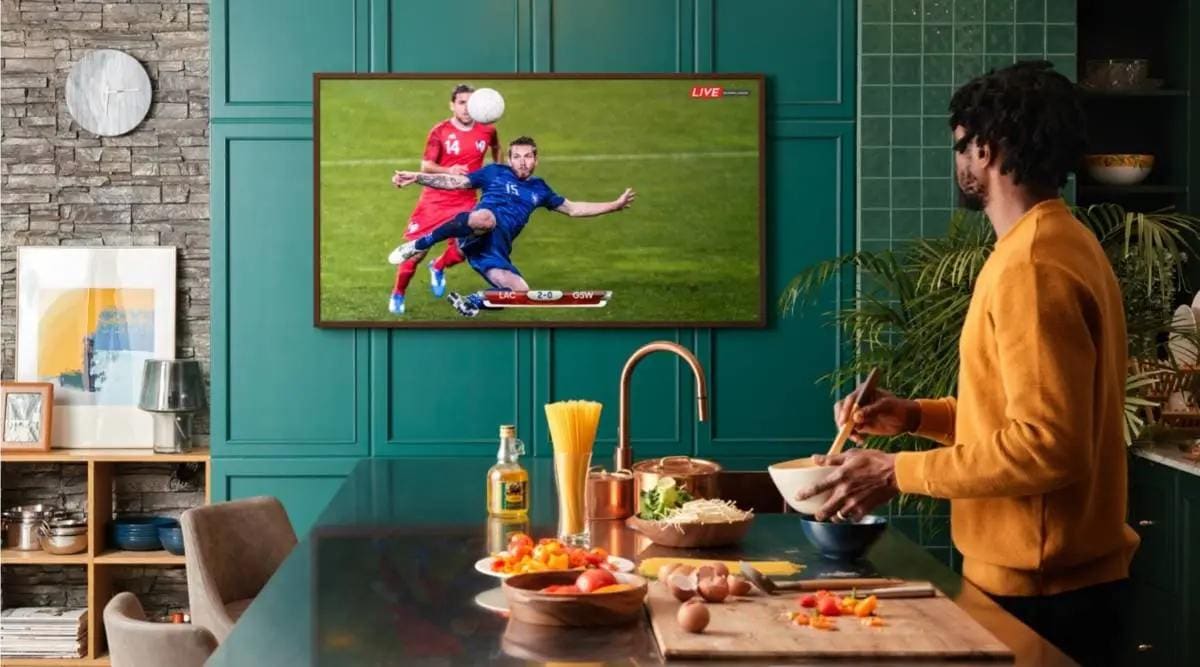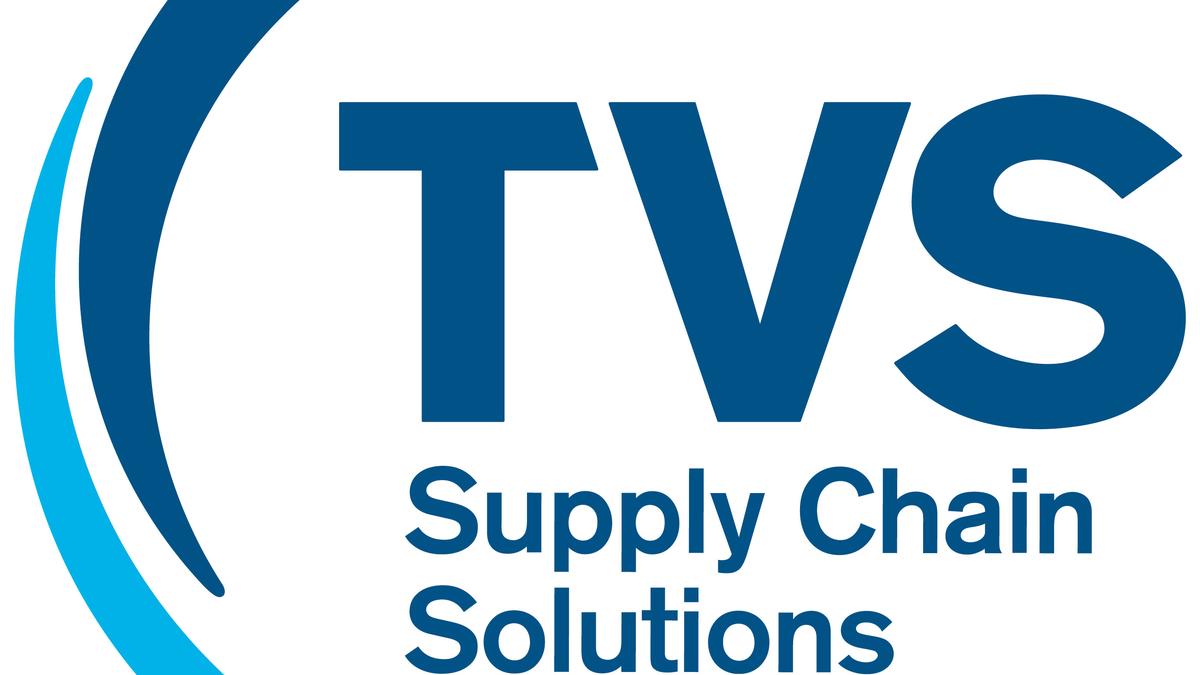If like Apple Music, the Apple Health app with its deep dive analytics into vital signs is not available beyond the iOS ecosystem, it could be because of the Cupertino-based tech giant’s lack of confidence in the privacy capabilities of other platforms and devices. Apple’s Vice President, Health, Dr Sumbul Desai told indianexpress.com that since privacy is so fundamental, “that’s really what drives a lot of our decisions in terms of what we do and how we make our products available”.
“Obviously, we always want as many people to be using our features as possible. We are really laser focused on doing the best work we can every day to make sure that we are sticking to our core principles and every feature we put out there is meaningful to whoever uses it,” Dr Desai said in a recent conversation. She said the team at Apple was focused on how to “empower people to be at the centre of their health and focus on their health with actionable insights, scientifically grounded insights, and make sure we maintain privacy”.
She reiterated: “We will never sacrifice on any of those, to the extent of privacy being core of everything we do. That is a lot of what drives our decision-making on how we can make it available across different platforms. Privacy is so fundamental, especially when it comes to health, you should expect the same privacy that you would expect from your doctor, from your devices.”
Dr Desai said what was really important for them was to “provide information that’s actionable”. “We don’t want to provide information for information’s sake, because that doesn’t do anything. What we are really looking at is how do we provide actionable insights. And those insights have to be the reason we make that point,” said Dr Desai, who was earlier Vice Chair of Strategy and Innovation in the Department of Medicine at Stanford Medicine, as well as Associate Chief Medical Officer at Stanford Healthcare. She joined Apple exactly five years ago.
Dr Desai underlined how Apple’s approach was “grounded in science”. She explained: “We want the individual to not just have an understanding of the scientific backing of these actual insights, but also the medical community, because we really believe that the partnership (between the practitioner and the individual user) is really sacred. We want to enrich that partnership so that you have more information so the practitioner can rely on it from a scientific basis, more information to understand what’s going on with an individual.”
As a doctor who still makes time to treat as well as teach at Stanford where she is faculty, Dr Desai said these little data moments are almost like “snapshots and pictures”. “If we didn’t have these little snapshots of insights, the only data that a physician has to go with is when you are sitting in front of them in the clinic. As physicians, we would love more information and now we have some data points that also supplement whatever you are telling me. Along with the traditional clinical metrics, it just gives us more of a comprehensive data set to be able to potentially make clinical decisions.”
Despite the widespread acceptance now of the data from Apple Watches, Dr Desai makes it clear their devices are “never meant for diagnosis”. She underlines: “What they are meant for is additional screening, or additional information so that you can make more actionable decisions and have more actual insights, both from a physician standpoint, so you can make the right clinical decision for your patient, and for the user, for them to make more scientifically grounded insights in terms of how they change or engage in their life.”
Though there have been great strides made in the space of health data and analytics in the past few years, Dr Desai cautions that it is still very early in this journey. “We are big believers in making sure we work with the medical community and partner with them to make sure technology is used appropriately in health. We don’t like to throw technology over the wall and have the clinicians figure it out.”
Dr Desai said this is why Apple works a lot with physicians and, when designing technology, has conversations to understand if it will solve a problem or create more.
“But I do think an individual now feels more empowered about asking the right questions,” she added, citing the example of the Health Sharing feature that lets a user share certain metrics with either a family member or care provider. “But really the power is the conversation it potentially spurs because that’s really where you can understand goals in a family around your health. It gives you an opportunity to kind of have deeper conversations around your health and it also gives you an opportunity to celebrate each other if you are doing good things when it comes to your health. To me, that’s the power…it’s about how do we get people to start having the right conversations and have the right mindset around health and then continue to pull on that thread.”
She also cited the example of the walking steadiness feature, which understands the changes in someone’s mobility and notifies them if changes are seen in walking patterns. “Just the fact that we can bring attention to areas that we may not always think about in relation to our health, but have technology to help us be thinking about it and actually gathering metrics to give more insights, can be really powerful.”
That said, Dr Desai qualified: “We are very early…it’s such a big space. There are so many areas where we can have impact or need to have impact. I’m really excited about what the future holds, but we also know we have a lot more work to do.”
On how Apple has to work with regulators across the world to push what is early-stage technology, Dr Desai said: “We do have this conversation in every country, differently. Of course, everybody loves things to be faster, but faster isn’t always better either.”
Why she appreciates the conversations with the regulators, Dr Desai said, is because it’s “actually a nice window into how every country actually has their focus areas, and issues that really are important to them. It gives us insight and so in one sense, we are actually really grateful to be able to have those conversations because it allows us to have a better understanding of our population and ultimately our users.” She said this also makes them better, “as we have to push ourselves to a certain bar to be able to answer those questions… it’s a good check and balance”.
As someone who has been on the healthcare side too, Dr Desai said she has grown to appreciate all the checks and balances that exist in the sector so that you are always doing the right thing for the customer or the patient and the user. “While I love things to be faster, a lot of that is the science and the trials that you actually have to do to validate your work. And that is just the research and development process of actually enrolling patients and doing the studies, taking time…that’s the right way to do it.”
Dr Desai said she would never want to sacrifice the quality and the excellence that has to go into the thinking. “I would never want to deliver a faster feature and sacrifice the science or the evidence around it.”
!function(f,b,e,v,n,t,s)
{if(f.fbq)return;n=f.fbq=function(){n.callMethod?
n.callMethod.apply(n,arguments):n.queue.push(arguments)};
if(!f._fbq)f._fbq=n;n.push=n;n.loaded=!0;n.version=’2.0′;
n.queue=[];t=b.createElement(e);t.async=!0;
t.src=v;s=b.getElementsByTagName(e)[0];
s.parentNode.insertBefore(t,s)}(window, document,’script’,
‘https://connect.facebook.net/en_US/fbevents.js’);
fbq(‘init’, ‘444470064056909’);
fbq(‘track’, ‘PageView’);







